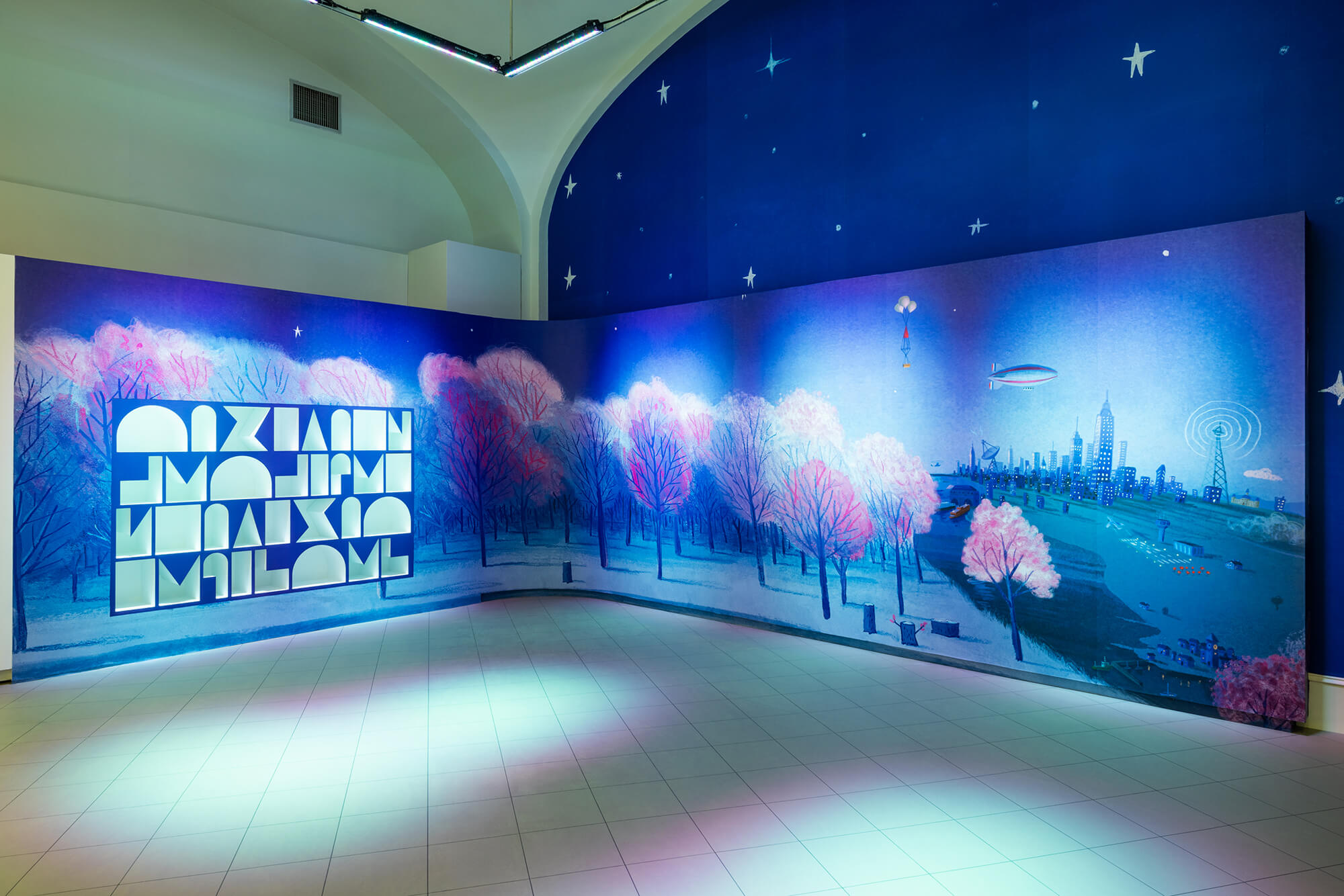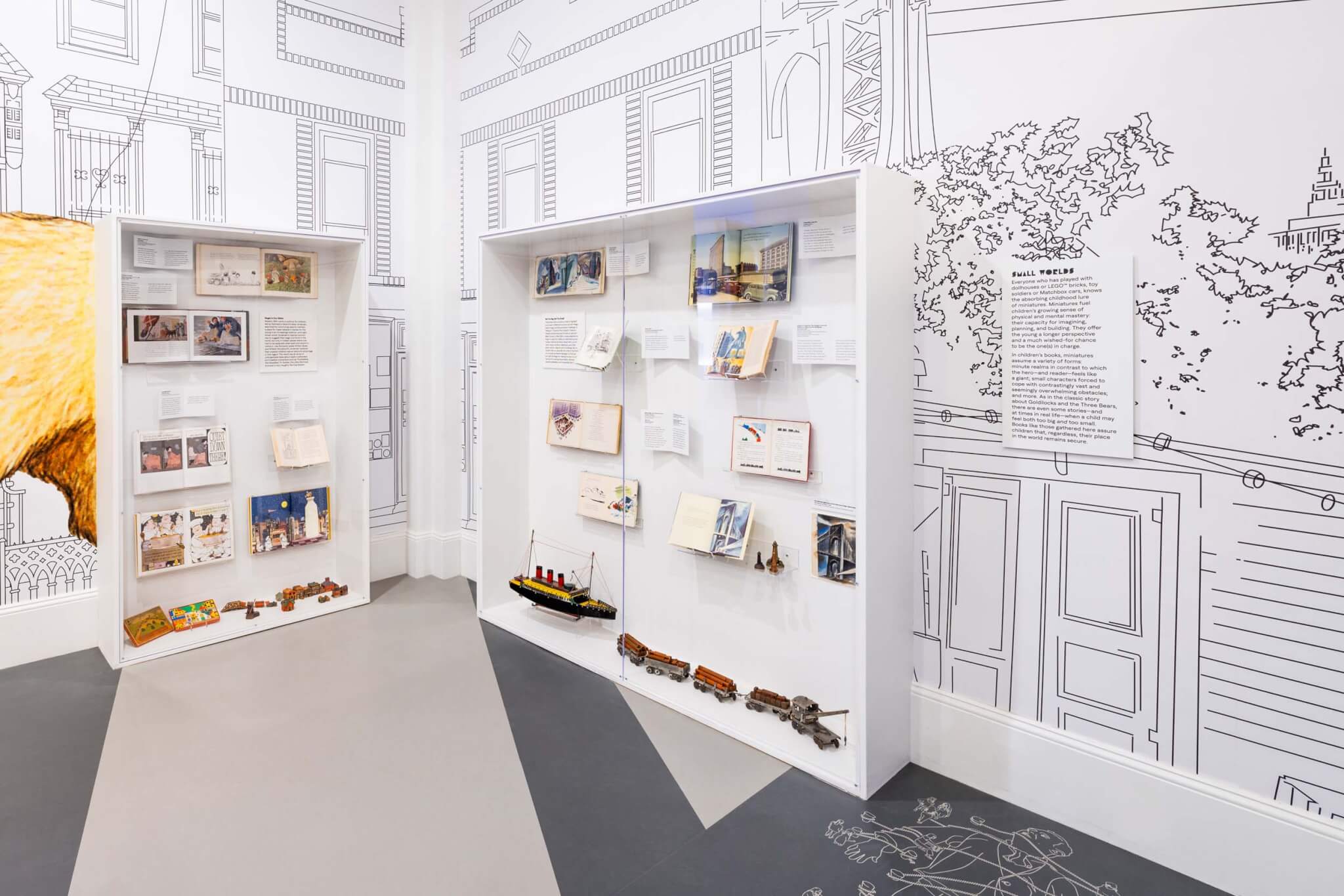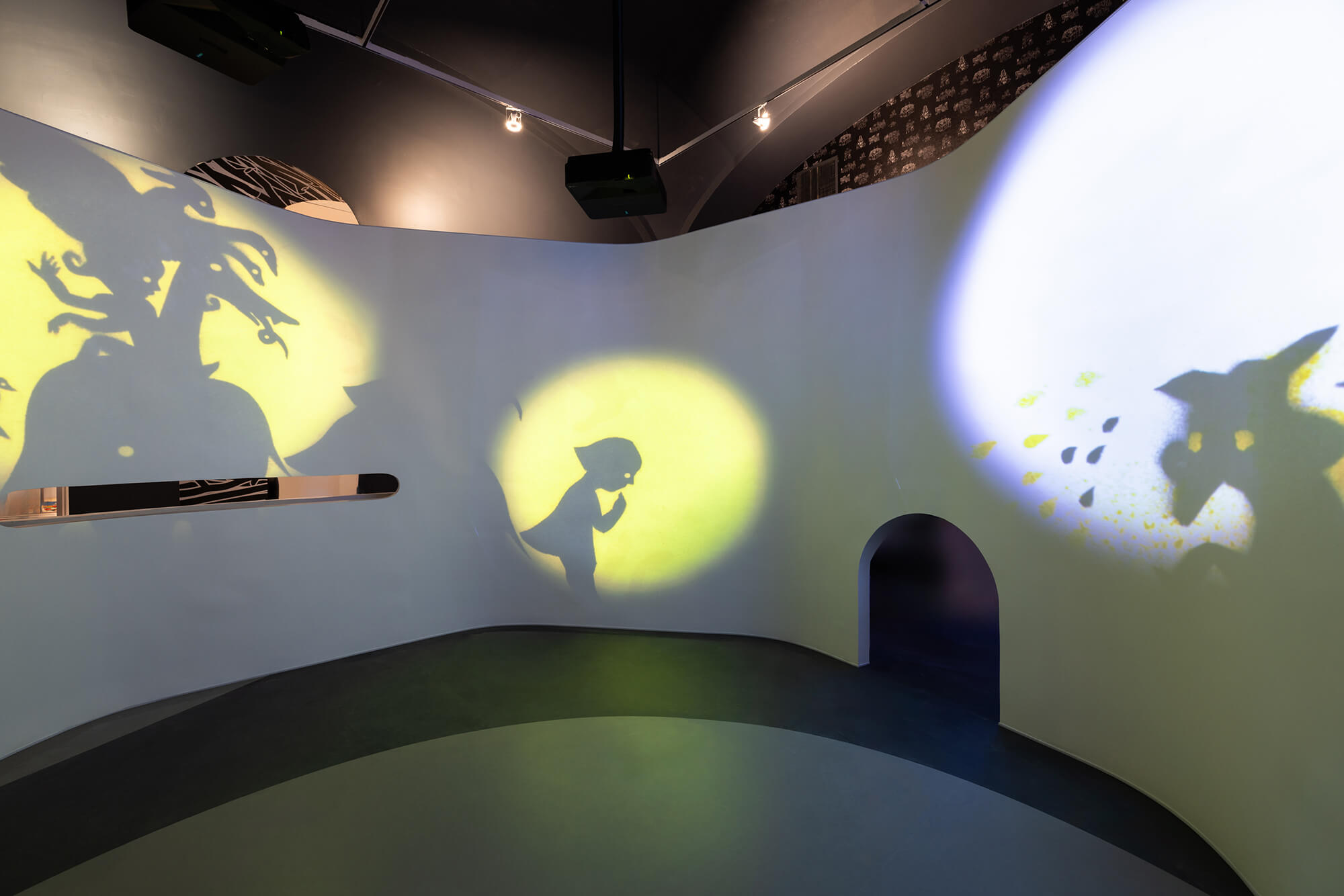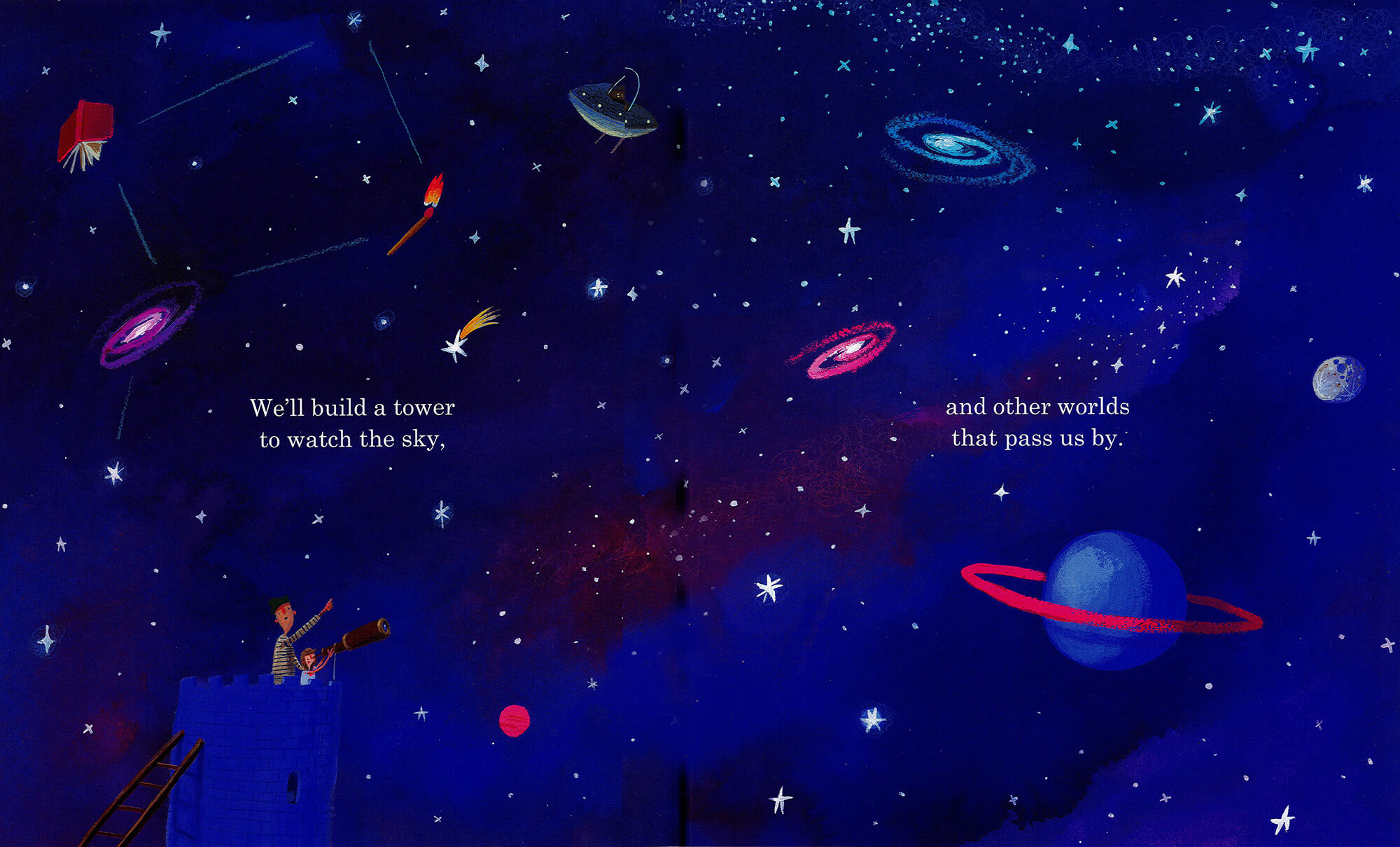In Washington, D.C., a new landmark exhibition is now open at the National Building Museum which caters to a multigenerational audience: children, parents, grandparents, and caregivers. Building Stories tries to bring children’s books to life through a series of linked and immersive landscapes. The show will be on view for the next ten years; it is curated by Leonard Marcus—the country’s leading expert on children’s literature—and designed by Plus And Greater Than, a Portland, Oregon–based exhibition and experiential design studio.

The show occupies 4,000 square feet on the ground floor of the cavernous National Building Museum, a grandiose building designed by General Montgomery C. Meigs after the U.S. Civil War. Building Stories takes place in different galleries branched off of the National Building Museum’s palatial interior courtyard. Related programming for the museum’s youngest visitors will augment the exhibition.
Large, mural-sized illustrations and multimedia components installed across the four galleries offer guests a primer on crafting story books, as well as more of a thematic look at the book-building relationship through explorations of home, play, and by asking big questions about our built environment.

The first gallery is titled “Building Readers” which functions as an introduction. The space explores a child’s first experiences of shapes, forms, imagery, and words as they become building blocks of language and the built environment. This sequence also describes how stories can be influenced by the physical design of books. Here, curators have drawn connections between the design of books and that of buildings vis-a-vis comparative sketches, architectural models, and rare book dummies.
“Your Home, My Home” takes over gallery two. It posits three archways inspired by the classic Three Little Pigs story, replete with graphic maps that encourage children to consider wayfinding and spatial navigation. There, visitors encounter an immersive round theater with a multimedia presentation replete with light, projection and sound. This gallery “explores the idea and expression of home in its many forms: a bedroom, a house, or a neighborhood and community,” the museum commented in a press release.

Gallery three is themed “Scale Play.” There, curators created a “magic portal” threshold, a tapered tunnel meant to make visitors feel as though they are changing size as they enter. The curators challenge guests to reconsider their own perceptions of the world around them through play, a recurring theme in children’s literature.
The fourth and last gallery goes under the moniker “Wider World.” This terminal component brings all of the exhibition concepts together to focus on the possibilities for children’s real-world empowerment and participation. Here, visitors enter a light-filled landscape clad with illustrations by illustrators such as Oliver Jeffers. Children, adults, and caregivers will walk away from Building Stories looking for answers to questions such as “how can we build a better world, together?”

“We are ecstatic to open Building Stories to the public and we hope that with it the Museum can be an anchor in the revitalization of downtown D.C.,” said Aileen Fuchs, president and executive director of the National Building Museum. “Recognizing the enduring power of storytelling to shape perspectives and engage us in envisioning a better world, our goal is to bring more than 1 million visitors to witness the power of Building Stories, fostering a cultural resurgence. Additionally, the exhibition and affiliated programming will add capacity to the District’s early learning networks, providing out-of-school learning opportunities for students, particularly those in K-3 grades.”











